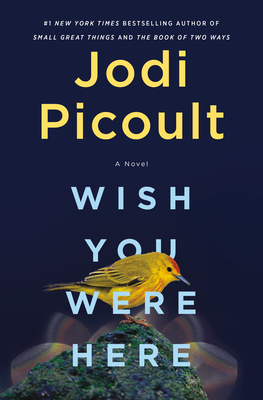
Wish You Were Here:
Chapter 17: Seventeen
by Picoult, JodiThe chapter opens with a poignant and introspective question from the narrator, who wonders if they are alone in experiencing the unique grief of losing their mother twice. This rhetorical question sets a deeply personal and emotional tone, hinting at a complex relationship with loss and memory. The brevity of the excerpt underscores the weight of the narrator’s sorrow, leaving readers to ponder the layers of meaning behind the statement.
The narrator’s query suggests a metaphorical or symbolic interpretation of death, implying that their mother’s passing was not just a physical event but also an emotional or psychological one. This duality of loss could reflect unresolved grief, a strained relationship, or even a sense of abandonment. The chapter’s title, “Wish You Were Here,” further amplifies the theme of longing and absence, evoking a sense of yearning for connection with the departed.
The sparse yet powerful language invites readers to project their own experiences of loss onto the narrator’s words, creating a universal resonance. The chapter’s emotional core lies in its exploration of how grief can be multifaceted, with death sometimes occurring in stages rather than a single moment. This perspective challenges conventional notions of mourning, suggesting that loss can be an ongoing process rather than a finite event.
Ultimately, the chapter serves as a meditation on the enduring impact of losing a loved one and the ways in which that loss can manifest over time. The narrator’s vulnerability and raw honesty make the excerpt relatable, offering solace to others who have faced similar struggles. While brief, the passage leaves a lasting impression, encouraging readers to reflect on their own experiences with grief and the complexities of memory.
FAQs
1. Comprehension Question
What is the central emotional conflict expressed in the opening line of Chapter Seventeen?
Answer:
The opening line, “Am I the only person in the world whose mother has died twice?” reflects a profound emotional conflict rooted in grief and existential isolation. The narrator grapples with the uniqueness of their loss—experiencing a mother’s death multiple times—which suggests metaphorical or layered losses (e.g., physical death followed by secondary losses like fading memories or unresolved relationships). This rhetorical question underscores themes of loneliness and the search for shared understanding in suffering, setting a tone of vulnerability for the chapter.2. Analytical Question
How might the phrase “died twice” be interpreted beyond literal death, and what literary devices could the author be employing?
Answer:
“Died twice” likely symbolizes non-literal forms of loss, such as the erosion of a mother’s presence through dementia, estrangement, or the narrator’s evolving perception of her after death. The author may use hyperbole (“only person in the world”) to emphasize feelings of isolation, while paradox (“died twice”) invites readers to explore contradictions in grief—e.g., mourning both a person and the idea of them. The line’s brevity and directness also employ minimalism to amplify emotional weight.3. Critical Thinking Question
Why might the author choose to open the chapter with a question rather than a statement, and how does this impact the reader?
Answer:
Opening with a question engages the reader immediately by inviting them into the narrator’s internal dialogue. It creates intimacy and urgency, as questions demand mental participation. This technique also mirrors the universality of grief—readers may reflect on their own losses or feelings of singularity in pain. By framing the chapter as a search for answers, the author positions grief as an ongoing, unresolved journey rather than a static experience.4. Application Question
If this line represents a character’s coping mechanism, what might it reveal about their psychological state?
Answer:
The line suggests the character is in a stage of bargaining or reflection, common in grief processing. By questioning whether their experience is unique, they may be seeking validation or connection to alleviate guilt or confusion. The focus on “twice” implies fixation on compounded trauma, potentially indicating unresolved earlier grief or complicated mourning. Psychologically, this could signal a need for narrative therapy—reconstructing the mother’s story to reconcile the layers of loss.5. Thematic Question
How does this line contribute to broader themes of memory and identity in the book?
Answer:
The duality of death (“twice”) hints at memory’s role in sustaining or distorting identity after loss. The mother’s “second death” could represent the narrator’s fear of forgetting her or the collapse of how she was once perceived. This ties to themes of how loved ones live on through remembrance and how grief reshapes personal identity. The question’s existential tone also underscores the tension between holding on and letting go, a recurring motif in narratives of bereavement.
Quotes
1. “Am I the only person in the world whose mother has died twice?”
This opening line captures the chapter’s central theme of grief and the surreal experience of loss. The rhetorical question immediately establishes the narrator’s unique emotional struggle, framing the chapter’s exploration of personal tragedy and its lingering impact.
